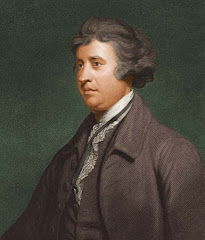The collective hatred of our nation’s past by the leftist ruling "ideological caste" takes practical form in their drive to erase all aspects of our culture, traditions and physical history — and is best illustrated by their physical erasure of our traditional architectural forms and its replacement with drab soviet-style ‘accommodation’.
This destruction of all forms of our national identity is engendered by a sense of shame which has been developed and perfected by the ruling elite during the course of the last century. They view all our previous cultural achievements as ‘bad’ or gained immorally at some other nation’s expense. As a result, they wish to eradicate our collective identity and deculturalise us from our roots.
A classic example was taking London Bridge to Lake Havasu, Arizona. It now crosses the Bridgewater Channel from the mainland to a small island on the Colorado River, is world-famous and draws visitors from all over the world. The bridge was sinking into the River Thames and should have been corrected but instead was sold to America. Robert P. McCulloch had the bridge dismantled and sent by barge to the California coast where it was loaded and taken by lorry to Lake Havasu and rebuilt ‘brick’ by ‘brick’. The bridge is a focal point for the city.
Near the bridge is an ‘English Village’ which pays respect to our culture. It has Tudor style architecture, and the shops and restaurants create the atmosphere of old England, with tree-lined walkways and local breweries for hand-brewed ale. There is an English pub in San Francisco — but in England they are being replaced by continental café bars!
For more than 140 years, London Bridge served as a crossing over the River Thames. It survived both world wars and a terrorist attack in 1884. If an American entrepreneur could do all that, then why could London council not conserve it? Because Americans have more respect for our traditions than our local authorities. American tourists constantly ask locals, “Why are you ruining your culture?” We are not — local authorities are imposing this on us.
There is also the eradication of our culture and its replacement by almost any other culture. We have seen the destruction of the traditional British pub, a centre of community and so much admired by tourists, for continental café bars. We see ‘Social Engineering’ by design, in schemes throughout the country whereby our towns and cities are having European style piazzas built to make us feel more European and thus less British. There was an attempt by the council to turn famous London landmark Sloane Square into a European piazza but a strong local opposition stopped it. People are born with an emotional need for community with their own kind and are not units to be re-organised to suit inorganic plans.
It is impossible to love cold, unnatural tower blocks or office buildings built along these lines, or places dominated by such buildings. But this is not just aesthetics; it is about our very identity, which is reinforced by the reciprocal relationship between people and the places in which they live. Building on what we have in a similar scale and style maintains continuity and helps to focus culture and identity. National and local governments alike are destroying places that are sanctioned by time and use, where communities have grown up and grown together instinctively. People’s natural bonding instincts are thwarted by high-rise buildings that separate them from one another and are not physically conducive to developing community spirit — the sense of belonging and of knowing with whom you belong.
Social engineering was to change the physical and mental environment, and thereby change people, who were seen as malleable. But people are not malleable — human nature needs familiar surroundings to develop and be happy. People react aggressively and destructively if this is denied.
Canadian Plains Indians, the Innu, were moved by the Canadian government into specially built estates. They were effectively forcibly transformed into Canadians, just as Britons are being forcibly transformed into ‘citizens of the world’. Like us, the Innu are having their past erased and are being offered nothing for the future — despair has set in, as it is setting in on Britain’s sink estates. A superficial difference is that the Innu were dispossessed by a different ethnic group (Canadian globalists), whereas we are being dispossessed by our own elected representatives (British globalists). But it is the same global movement. In the young Innu, deculturalisation manifests in drug and alcohol abuse and petty crime.
A parallel process is imposed here. In the same deculturalising vein, John Prescott issued a Government directive to destroy 40,000 terrace houses in England by dictat. Twenty thousand habitable homes in Liverpool were to be demolished and replaced by homes outside the range of the dispossessed locals. This is not the first time that ‘Scousers’ have been moved without thought for where they belong and uprooted and forced onto estates modelled on schemes in the Soviet Union.
A parallel with the Innu in England was moving ‘Scousers’ from their root in Liverpool to new towns like Skelmersdale. They should have followed on from traditional estates. Instead they were designed to separate vehicles from pedestrians with a system of courtyard layouts and cul-de-sacs emerging off spine streets, which led to disproportionate costs in street cleaning, refuse collection, ground and street furniture maintenance and, particularly, policing. Skelmersdale was built on an old coalfield and around a series of deep clefts in the moor side that go down into the middle of the town, which meant that extensive ground remediation and stabilisation was required for any construction.
It was built using innovative and experimental techniques — but these were deeply flawed, requiring expensive remedies. Many houses had central heating outlets in the ceiling. The fact that heat rises was ignored, so the bedrooms were heated moderately well but not the downstairs rooms. And one can punch a hand through walls because the houses’ metal frames are corroded and the concrete slabs have collapsed.
More and more of Britain’s young people are aimless, lacking in self-respect, without tradition or a sense of being part of something significant. They are being denied the inheritance of their forbears. There have always been people at the bottom of the pile, but they used to develop within a cultural tradition to which they belonged. Most young people do not misbehave out of endemic wickedness, but because they have been deculturalised. Thanks to a combination of social, cultural, political and environmental pressures, many young people in this country have been estranged from Britishness and severed from structures that helped civilise their ancestors. Buildings need to develop from traditions. We must renew those familiar traditions to civilise young people and minimise the vicious crimes we now have. These are often caused by unnatural and inorganic developments.
Walk along Eccleshall Road ‘Golden Mile’ and through St. Mary’s Gate subway, in Sheffield, and you will see pedestrians averting their eyes in fear, too frightened to look at anyone approaching. I went through recently and was appalled when a young Chinese woman who was walking towards me averted her eyes with terror on her face. “Well,” you might say, “Why not run over the dual carriageway as people in Birmingham do to avoid being mugged in subways?” Because the council put railings inside the hedge along the strip between the two roads to force people through the underpass.
We must restore our town and city centres and historical buildings to the way they were before councillors and developers began destroying them.
A plethora of radical new municipal building swept across the country from the 1950s onwards — schools, hospitals, offices, civic centres, entertainment and sports venues, shopping parades, shopping malls, new road schemes and street furniture, and apartment tower blocks to house tenants whose “slums” had been bombed or condemned as unfit for habitation.
Historic towns such as Peterborough were changed by vast, bland new housing estates for ex-slum-dwellers. These schemes looked exciting in the plans but in practice were ugly, expensive and inefficient.
You only have to look at pictures of old Birmingham, which show a fine Victorian city with buildings like Snow Hill station, which was like a cathedral in its proportions; the Woodman, a glorious Victorian pub; and the old library, to see the wanton destruction so often perpetrated by local authorities. The Bull Ring shopping area was redeveloped in the 1960s, and was so ugly, so unpopular and so badly constructed that it has since been redeveloped.
The local authorities have no respect for local history. A pub called the Railway in Birmingham was knocked down, despite its local importance as the venue where Ozzy Osborne began his career. After all, it is only local history! A little pub called the City Tavern, the only Victorian one left in Birmingham’s deculturalised city centre, was to be knocked down for a car park until a protest saved it. The Yorkshire Grey in Sheffield was demolished for a car park. Originally the Minerva, it was where Joe Cocker made his first public appearance. The leader of the council wants to look to the city’s future apparently. What an appalling lack of respect for a city, its people and their heritage! Then, of course, the cavern was demolished by business people in Liverpool.
One of the examples sent to me is that of the little Black Country town, Cradley. It recently had one side of its main High Street demolished for a by-pass. It has made the town look ridiculous and odd. This folly was proposed to the council by unelected planners and, in this case, authorised by just one councilor. I rang Sandwell council several times but none of the planners were ever available and the calls were not returned.
On the demolished side of the road a new Tesco was built. Although it is a convenience for shoppers from the surrounding areas, the local traders have suffered greatly. This typifies a serious problem with local councils. They stand for election promising to represent local people but often act against their interests once elected.
A combination of social, cultural, political and now environmental pressures with the underlying shame of what we have achieved, has deculturalised native people leaving them estranged from Englishness, severed from all the civilizing structures that their ancestors could take for granted. A serious and sustained programme of architectural reconstruction, rebuilding our traditional buildings and re-linking to our history could help people reconnect with their roots, and feel proud of their towns and cities.
Local councillors are elected by only a minority of voters, on average 20 percent of people over 18 — but not those younger who inherit the mess local councils are causing — and are not representative of the public. We need to appoint a network of independent officers who have both the responsibility and the resources to preserve or represent the local communities rather than sectional interests. We also need planning law reform to make it harder for councillors, who act as agents for developers, to destroy old buildings.
Former councillors from various areas have told me about corruption and backhanders and this is what we must expose. Those who can be shown to have taken bribes to demolish buildings and redevelop our towns and cities must be exposed.
We need housing policies which encourage the creation of buildings that fit into the traditional milieu, and which seek to rebuild much of what has been destroyed by local governments.
Wednesday, 14 October 2009
Subscribe to:
Post Comments (Atom)











No comments:
Post a Comment